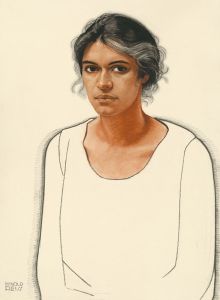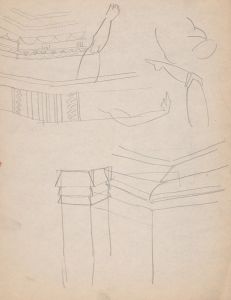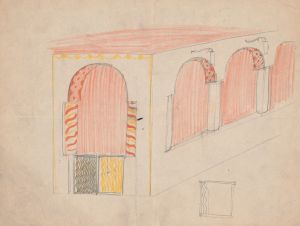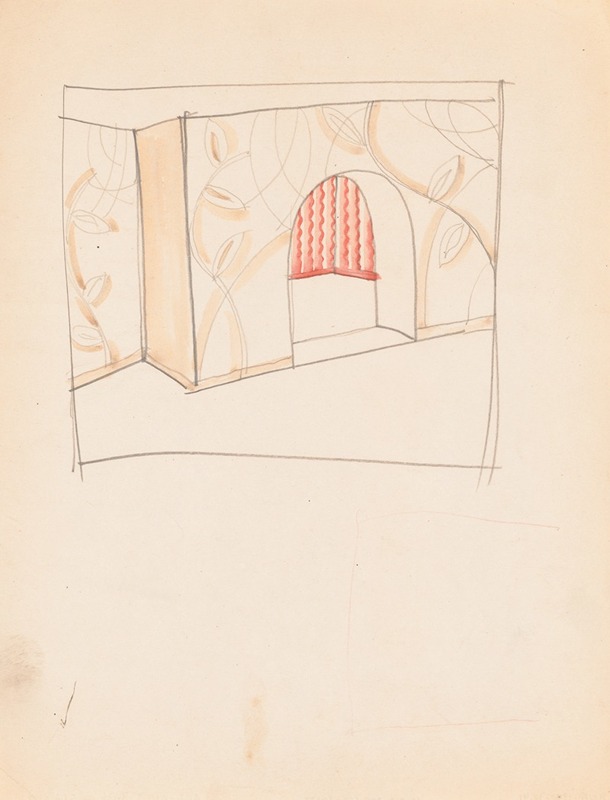
Design drawings for miscellaneous interiors, some possibly related to the Hotel St. George, New York, NY. Sketch for miscellaneous interior
A hand-painted replica of Winold Reiss’s masterpiece Design drawings for miscellaneous interiors, some possibly related to the Hotel St. George, New York, NY. Sketch for miscellaneous interior, meticulously crafted by professional artists to capture the true essence of the original. Each piece is created with museum-quality canvas and rare mineral pigments, carefully painted by experienced artists with delicate brushstrokes and rich, layered colors to perfectly recreate the texture of the original artwork. Unlike machine-printed reproductions, this hand-painted version brings the painting to life, infused with the artist’s emotions and skill in every stroke. Whether for personal collection or home decoration, it instantly elevates the artistic atmosphere of any space.
Winold Reiss was a German-American artist and designer known for his work in interior design, portraiture, and graphic arts. Born in Karlsruhe, Germany, in 1886, Reiss immigrated to the United States in 1913, where he became a prominent figure in the American art scene. His work often combined elements of European modernism with American themes, and he was particularly noted for his vibrant use of color and innovative design techniques.
The "Design drawings for miscellaneous interiors, some possibly related to the Hotel St. George, New York, NY" are a collection of sketches attributed to Reiss. These drawings reflect his skill in interior design and his ability to create spaces that were both functional and aesthetically pleasing. The Hotel St. George, located in Brooklyn Heights, New York, was once one of the largest and most luxurious hotels in New York City. It was known for its opulent interiors and grand public spaces, which attracted a diverse clientele, including celebrities and dignitaries.
Reiss's involvement with the Hotel St. George, if any, would have been consistent with his career trajectory during the early to mid-20th century, when he was actively engaged in designing interiors for various commercial and public spaces. His design philosophy often emphasized the integration of art and architecture, creating environments that were immersive and engaging. Reiss was known for his ability to blend different cultural influences into his work, drawing inspiration from Native American, African, and European art traditions.
The sketches attributed to Reiss for miscellaneous interiors showcase his attention to detail and his innovative approach to design. While specific details about the interiors depicted in these sketches are not widely documented, they likely feature Reiss's characteristic use of bold colors, geometric patterns, and a harmonious balance between form and function. His work often included custom-designed furniture, textiles, and decorative elements that complemented the overall aesthetic of the space.
Reiss's contributions to interior design extended beyond individual projects; he was also a prolific educator and writer, sharing his insights and techniques with a broader audience. His legacy in the field of design is marked by his ability to transcend traditional boundaries and create spaces that were both modern and timeless.
While the exact connection between Reiss's sketches and the Hotel St. George remains unclear, his influence on the design of public and private spaces in New York City and beyond is well-documented. His work continues to be celebrated for its artistic innovation and its impact on the development of modern interior design in the United States.





![[Graphic designs for Fortune magazine.] [Studies for cover drawn on black paper](/imgs/249266/s/winold-reiss-graphic-designs-for-fortune-magazine-studies-for-cover-drawn-on-black-paper-d9c315c5.jpg)
![Design drawings for Club Gallant project, New York, NY.] [Study for Club Gallant exterior](/imgs/249273/s/winold-reiss-design-drawings-for-club-gallant-project-new-york-ny-study-for-club-gallant-exterior-822ea339.jpg)
![Design drawings for Community Coffee Shops, Wilkes-Barre, PA.] [Proposed doors and lighting fixtures, Lumiline light fixture and door, elevations and plan](/imgs/249274/s/winold-reiss-design-drawings-for-community-coffee-shops-wilkesbarre-pa-proposed-doors-and-lighting-fixtures-lumiline-light-fixture-and-door-elevations-and-plan-c8102872.jpg)
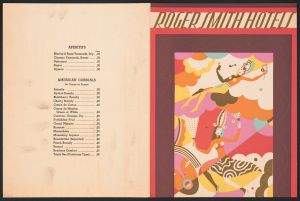
![Designs for promotional material for opera singer Emanuel List.] [Drawing for brochure page](/imgs/249318/s/winold-reiss-designs-for-promotional-material-for-opera-singer-emanuel-list-drawing-for-brochure-page-3320265e.jpg)
![Designs for Shellball Apartments, 8300 Talbot St. at Lefferts Blvd., Kew Gardens, New York, NY.] [Perspective drawing of lobby](/imgs/249322/s/winold-reiss-designs-for-shellball-apartments-8300-talbot-st-at-lefferts-blvd-kew-gardens-new-york-ny-perspective-drawing-of-lobby-e19c70e0.jpg)
![Exhibit design with stage in form of folding screen.] [Sketch of exhibit with modern chairs and tables](/imgs/249343/s/winold-reiss-exhibit-design-with-stage-in-form-of-folding-screen-sketch-of-exhibit-with-modern-chairs-and-tables-b25d6d6d.jpg)
![Interior perspective drawings of Hotel Siwanoy, Mount Vernon, NY.] [Interior perspective of dining room](/imgs/249368/s/winold-reiss-interior-perspective-drawings-of-hotel-siwanoy-mount-vernon-ny-interior-perspective-of-dining-room-d26480cd.jpg)

![Miscellaneous small sketches for inlaid table tops.] [Design with lined grid motif](/imgs/249437/s/winold-reiss-miscellaneous-small-sketches-for-inlaid-table-tops-design-with-lined-grid-motif-d3964044.jpg)
